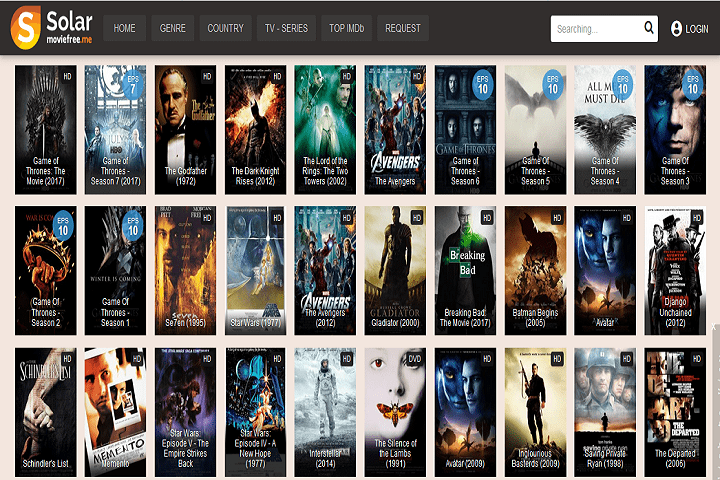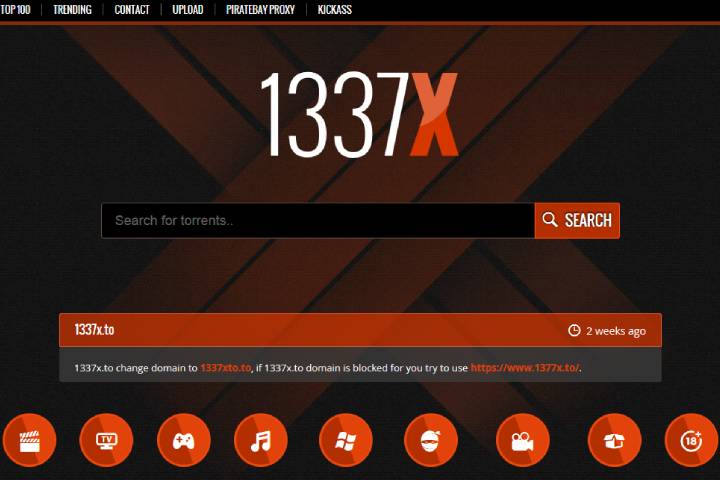Bitcoin
How To Accept Cryptocurrencies in Your Business
Are you interested in cryptocurrencies? Do you have a business and do not know whether you should take it as payment, and how to do it? Visit the right place.

Are you interested in cryptocurrencies? Do you have a business and do not know whether you should take it as payment, and how to do it? Visit the right place.
The price of Bitcoin continues to increase, and the public interest that cryptocurrencies arouse is only growing as time passes, so in this article, we will see what alternatives we have if we want to accept cryptocurrencies as a means of payment (as well as the implications that have) in a business.
Large companies are already investing a lot of work and money to operate these cryptocurrencies, but small businesses can also benefit from the same advantages.
For those businesses that transact frequently, it may be interesting to consider accepting payment in cryptocurrency in general (and in Bitcoin in particular) to increase the revenue from their sales, and even more so with the current hype of cryptocurrencies.
The main reasons for this step can be as diverse as attracting new customers, eliminating certain types of fraud, or showing a modern, up-to-date company.

Although we are going to focus the article on Bitcoin as it is the most popular and widespread cryptocurrency, much of what we are going to comment on is directly extrapolated to the rest of the cryptocurrencies.
To understand how Bitcoin payments work (and how to accept), it is necessary to familiarize yourself with some terms. If we are clear about these concepts, taking this type of payment is not excessively complex.
1. Terminology
Wallet:
A wallet, electronic pur se, or wallet is a software program in which cryptocurrencies are stored. Technically it is not a correct definition since bitcoins do not “move” anywhere, but conceptually we will take it that way.
Exchange:
It is a digital market in which traders can buy and sell bitcoins using different currencies (FIAT, or legal tender currencies such as the euro or the dollar, or ALTCOINS, or alternative cryptocurrencies, such as Ether, Litecoin, etc.).
It is still a digital way that acts as a source between users and bitcoin sellers.
QR Code:
It is a type of barcode formed by a matrix of blocks or dots, and that can be easily scanned with the camera of a Smartphone.
Public key:
For safety reasons, it is always used to encrypt a message. To decrypt a different key is used but associated with it, the private key. This is termed as asymmetric cryptography. The public-private key pair ensures secure communication.
Hardware terminal:
It is a hardware communication device that manages the input and presentation of data. For example, a terminal can be a PC connected to the network. For more details, Financial freedom is Here.

2. Offline Operations
Wallets:
If we are talking about businesses with a small volume of potential cryptocurrency users, the first way we can accept payments in Bitcoin, and the easiest, would be to ask customers to directly transfer the money.
Still, before doing something like that, it is necessary to configure a Bitcoin wallet in any of the existing crypto exchanges.
All you have to do is register a wallet with an online Exchange, receive the wallet address, which is also the public key (a string of letters and numbers), and a private key, necessary to sign transactions and which should be kept secret, and use the public key as the wallet address for customers.
To make the process easier, it is a good to present the wallet address as a QR code. In this way, all the user has to do is scan the QR, enter the corresponding amount of Bitcoins, and sign with their private key.
Since the value of Bitcoin fluctuates a lot, it is imperative to make sure you get the current exchange rate (at the moment) in any recognized and guarantee Exchange before making the transaction.
In this case, to withdraw the funds from the wallet and obtain fiat currency again, it will be necessary to link the checking account or the credit card.
Also, it is essential to notify users or clients that payment in Bitcoins is accepted through an advertisement since otherwise, they will rarely know that they can pay with a cryptocurrency.
Bitcoin
Elevating Your Bitcoin Understanding: A Guide for the Avid Learner
Want to learn about crypto investing from experts? This website, quantum-primeprofit.com can help you achieve excellence by connecting you with investment professionals. Learn more!

In the digital age, Bitcoin has emerged as a groundbreaking force, poised to transform conventional finance and payment methods through its decentralized digital currency. For those keen on grasping the intricacies of this financial revolution, this guide offers an all-encompassing view of Bitcoin, spanning from its inception to its contemporary influence. Want to learn about crypto investing from experts? This website, quantum-primeprofit.com can help you achieve excellence by connecting you with investment professionals. Learn more!
Table of Contents
1. The Genesis of Bitcoin
Bitcoin’s journey begins with an enigmatic figure known as Satoshi Nakamoto. In 2008, Nakamoto published a whitepaper titled “Bitcoin: A Peer-to-Peer Electronic Cash System.” This groundbreaking paper laid the foundation for what would become Bitcoin. To this day, Nakamoto’s true identity remains unknown, adding an element of intrigue to the Bitcoin story.
The whitepaper proposed a novel idea: a digital currency that operates on a decentralized ledger called a blockchain. This innovation was designed to eliminate the need for intermediaries like banks in financial transactions, making peer-to-peer transactions possible.
2. How Bitcoin Works
Blockchain Technology: The Backbone of Bitcoin
At the core of Bitcoin is blockchain technology. A blockchain is a distributed ledger that records all Bitcoin transactions across a network of computers. This ledger is immutable and transparent, making it virtually impossible to alter or manipulate transaction history.
Explaining the Concept of a Blockchain
A blockchain consists of blocks, each containing a group of transactions. These blocks are linked together in chronological order, forming a chain. Each block is cryptographically secured, ensuring the integrity of the entire ledger.
Mining and Consensus Mechanisms
Bitcoin transactions are validated through a process called mining. Miners use computational power to solve complex mathematical puzzles, adding new blocks to the blockchain. The first miner to solve the puzzle broadcasts the block to the network, and if a consensus is reached, the block is added to the chain.
3. Transactions and Wallets
To interact with the Bitcoin network, users need a wallet. A wallet contains cryptographic keys, including a public address for receiving Bitcoin and a private key for authorizing transactions. Security is paramount when it comes to Bitcoin wallets.
Cryptographic Keys and Addresses
Public keys serve as addresses that users share to receive Bitcoin. Private keys are secret codes that must be kept secure to access and authorize transactions.
Security Measures for Protecting Your Bitcoin
Users must employ robust security practices, including hardware wallets, multi-factor authentication, and offline storage, to safeguard their Bitcoin holdings.
4. Bitcoin’s Role in the Financial Ecosystem
Store of Value vs. Digital Cash
Bitcoin serves two primary functions: as a store of value and as digital cash. As a store of value, Bitcoin is often compared to gold, seen as a hedge against inflation and economic instability. Its finite supply (capped at 21 million coins) contributes to this perception.
Bitcoin as an Investment Asset
Bitcoin has gained widespread recognition as an investment asset. Its price volatility has attracted investors seeking high returns. Institutions and individuals alike have allocated a portion of their portfolios to Bitcoin, viewing it as a hedge against traditional financial markets.
Regulatory Challenges and Legal Considerations
As Bitcoin’s popularity has grown, governments and regulators worldwide have grappled with how to classify and regulate it. The regulatory landscape varies from country to country, making it crucial for Bitcoin enthusiasts to stay informed about their local laws and compliance requirements.

5. The Bitcoin Mining Process
The Mining Ecosystem
Mining is the process by which new Bitcoins are created and transactions are confirmed. Miners play a vital role in maintaining the integrity of the blockchain.
Miners, Nodes, and Mining Pools
Miners are nodes in the Bitcoin network that compete to solve cryptographic puzzles. Mining pools are groups of miners who combine their computational power to increase their chances of solving a puzzle and earning rewards.
Energy Consumption and Environmental Concerns
Bitcoin mining’s energy consumption has raised environmental concerns. The energy-intensive process of mining has led to debates about the sustainability of Bitcoin and efforts to develop more energy-efficient consensus mechanisms.
Bitcoin Halving Events and Their Impact
Approximately every four years, Bitcoin experiences a “halving” event, reducing the number of new Bitcoins created per block by half. This scarcity mechanism has historical precedents for driving up Bitcoin’s price and impacting the mining ecosystem.
6. Bitcoin’s Impact on Society
Financial Inclusion and Banking the Unbanked
Bitcoin has the potential to provide financial services to those without access to traditional banking. By simply having an internet connection, individuals can become part of the global financial network, sending and receiving Bitcoin without intermediaries.
Remittances and Cross-Border Transactions
Bitcoin’s borderless nature makes it an attractive option for remittances and cross-border transactions. It offers a faster and more cost-effective alternative to traditional money transfer services.
Bitcoin and the Future of Traditional Banking
The rise of Bitcoin has prompted traditional financial institutions to explore blockchain technology and digital currencies. Central banks are also researching and developing their digital currencies, known as central bank digital currencies (CBDCs), in response to the changing financial landscape.
7. Challenges and Future Trends
Scalability Issues and Lightning Network
Bitcoin faces challenges related to scalability, as it currently struggles to handle a high volume of transactions quickly and cost-effectively. The Lightning Network is an off-chain solution designed to address this issue, allowing for faster and cheaper transactions.
Competing Cryptocurrencies
While Bitcoin remains the dominant cryptocurrency, it faces competition from other cryptocurrencies like Ethereum, which offers smart contract capabilities and decentralized applications. These platforms are exploring innovative use cases beyond digital cash.
Central Bank Digital Currencies (CBDCs) and Their Implications
Central banks are actively researching and piloting CBDCs, which could potentially reshape the global financial system. The impact of CBDCs on Bitcoin and the broader cryptocurrency ecosystem remains a topic of debate and interest.
Conclusion
Bitcoin’s journey from an anonymous whitepaper to a global financial phenomenon has been nothing short of remarkable. Its potential to disrupt traditional finance, drive financial inclusion, and serve as an investment asset continues to captivate the world. As Bitcoin and blockchain technology evolve, avid learners should stay informed, engage with the community, and exercise responsible investment practices. The future of cryptocurrencies and their role in the global financial landscape remains an exciting and dynamic field to watch.
-

 Instagram4 years ago
Instagram4 years agoBuy IG likes and buy organic Instagram followers: where to buy them and how?
-

 Instagram4 years ago
Instagram4 years ago100% Genuine Instagram Followers & Likes with Guaranteed Tool
-

 Business5 years ago
Business5 years ago7 Must Have Digital Marketing Tools For Your Small Businesses
-

 Instagram4 years ago
Instagram4 years agoInstagram Followers And Likes – Online Social Media Platform
















